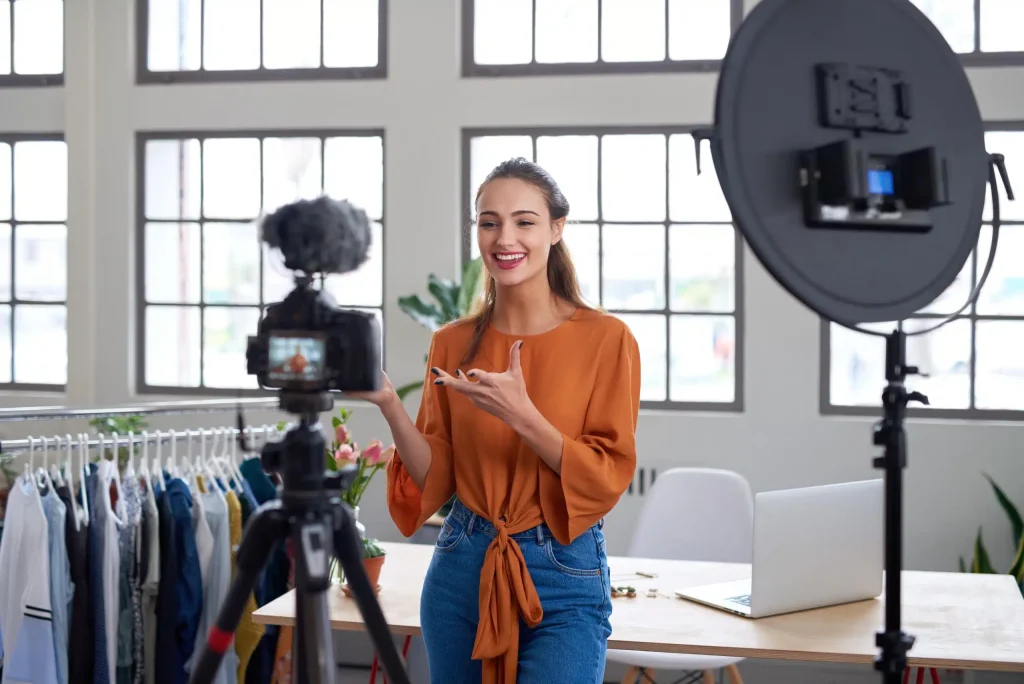When it comes to influencer marketing, authenticity and engagement are key. That’s where user-generated content (UGC) comes in. UGC is any content – social media posts, reviews, or user-submitted photos and videos – created and shared by consumers rather than the brand itself.
Businesses are increasingly recognizing the benefits of using UGC in their marketing campaigns. Why? Because UGC is cost-effective, it builds consumer trust and results in a more engaged audience. In this article, we’ll explore the benefits of UGC, the types of UGC, best practices for incorporating UGC, and successful examples of UGC campaigns.
Benefits of User-Generated Content
User-generated content (UGC) is a valuable addition to any marketing campaign.
Here are some of the benefits of incorporating UGC into your marketing efforts:
- Authenticity: Consumers trust user-generated content more than traditional advertising because it comes from other consumers rather than the brand itself. It adds an element of honesty to your message, making it more relatable to your audience.

- Cost-effective: UGC is often free, meaning that you can save money on content creation costs. Plus, since your audience creates it, it’s likely to be more relevant and unique than the content you could create in-house.
- Engagement: UGC can build stronger relationships with consumers by getting them involved with your brand. By encouraging them to create content, you give them a sense of ownership over your brand, making them more invested in it.
- Creativity: Consumers often bring fresh and unique ideas to your marketing campaigns, helping you stand out from competitors. UGC can give you access to new perspectives and innovative ideas you may not have considered otherwise.
Types of User-Generated Content
There are many different forms of user-generated content (UGC) that businesses can leverage in their marketing campaigns. Here are a few of the most common types:
Social media content
Social media platforms are a goldmine for UGC. Consumers can create posts, stories, and comments about your brand, sharing their experiences and opinions with others.

Reviews and testimonials
Consumers trust the opinions of other consumers, which is why reviews and testimonials are such valuable UGC. Encourage your customers to write reviews and share their experiences on your website and other review sites.
User-submitted photos and videos
Visual content is essential in today’s landscape, and user-submitted photos and videos can be a great way to showcase your products or services. You can encourage users to share their own images featuring your brand and create a hashtag to make it easy for you to find and feature that content.

User-created tutorials and FAQs
Depending on your industry, user-created tutorials and FAQs can be a great way to showcase your products or services. These types of UGC can help demonstrate how your product or service works and can be a valuable resource for other consumers who are considering your brand.
By leveraging these different types of UGC, businesses can tap into the power of user-generated content to build stronger relationships with their customers and create more engaging marketing campaigns.
Best Practices for Incorporating User-Generated Content
When incorporating user-generated content (UGC) into your marketing campaigns, it’s important to do so in an authentic, engaging, and effective way. Here are some best practices to keep in mind:
- Encourage UGC from consumers: Make it clear that you welcome UGC from your customers. Encourage them to share photos, videos, and reviews with a specific hashtag or by tagging your brand on social media. Create incentives such as discounts or giveaways to motivate users to participate.
- Curate and moderate UGC: While UGC is valuable, you need to monitor it to ensure it aligns with your brand values and is appropriate. Create guidelines for what types of content you welcome, and moderate submissions to ensure quality and relevance.
- Give credit to creators: Always credit the creator when sharing their UGC on your social media accounts or website. This not only shows respect for the creators but also demonstrates authenticity to your audience.
By following these best practices, businesses can harness the power of UGC to create authentic, engaging, and effective marketing campaigns that resonate with their audience.
Examples of Successful User-Generated Content Campaigns
Here are some examples of businesses that have successfully leveraged UGC in recent years:
Chewy
Chewy‘s #PetsOfChewy campaign encouraged customers to share their pet photos on social media using the hashtag. Chewy then featured the photos on their website and social media platforms, showcasing customers’ love for their pets while promoting their products.

L.L. Bean
The brand‘s “Be an Outsider” campaign encouraged customers to share photos and videos of themselves enjoying the great outdoors. The UGC was then featured in ads, social media, and in-store displays, creating a sense of community among L.L. Bean customers.

Fenty Beauty
The company’s “Fenty Face Fridays” campaign encouraged customers to share photos of their makeup looks on social media using the hashtag #FentyFaceFriday. The brand then reposted the UGC, showcasing its customers’ creativity while leveraging social media to promote its products.

Adidas
The popular brand’s “Run for the Oceans” campaign encouraged users to track their running progress using the Runtastic app. Adidas pledged to donate $1 to the Parley Ocean School for every kilometer tracked. This campaign not only encouraged engagement with the brand but also had a positive impact on the environment.

To summarize, user-generated content (UGC) is becoming an increasingly valuable tool in marketing campaigns. By incorporating UGC into their marketing strategies, businesses can build strong relationships with their customers while demonstrating authenticity, creativity, and engagement.
Whether it’s through social media content, reviews and testimonials, user-submitted photos, and videos, or other forms of UGC, brands have many ways to leverage the power of user-generated content.
